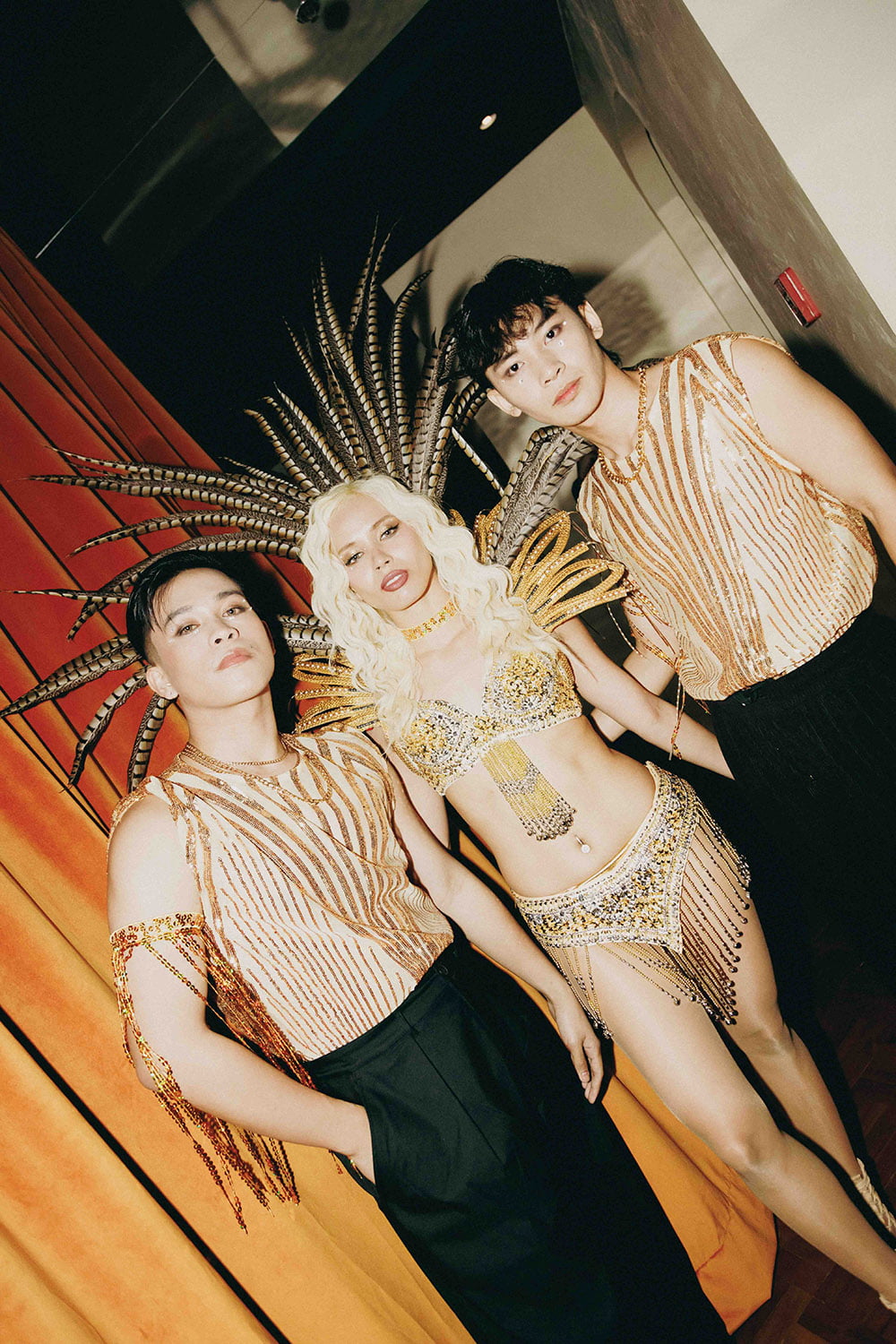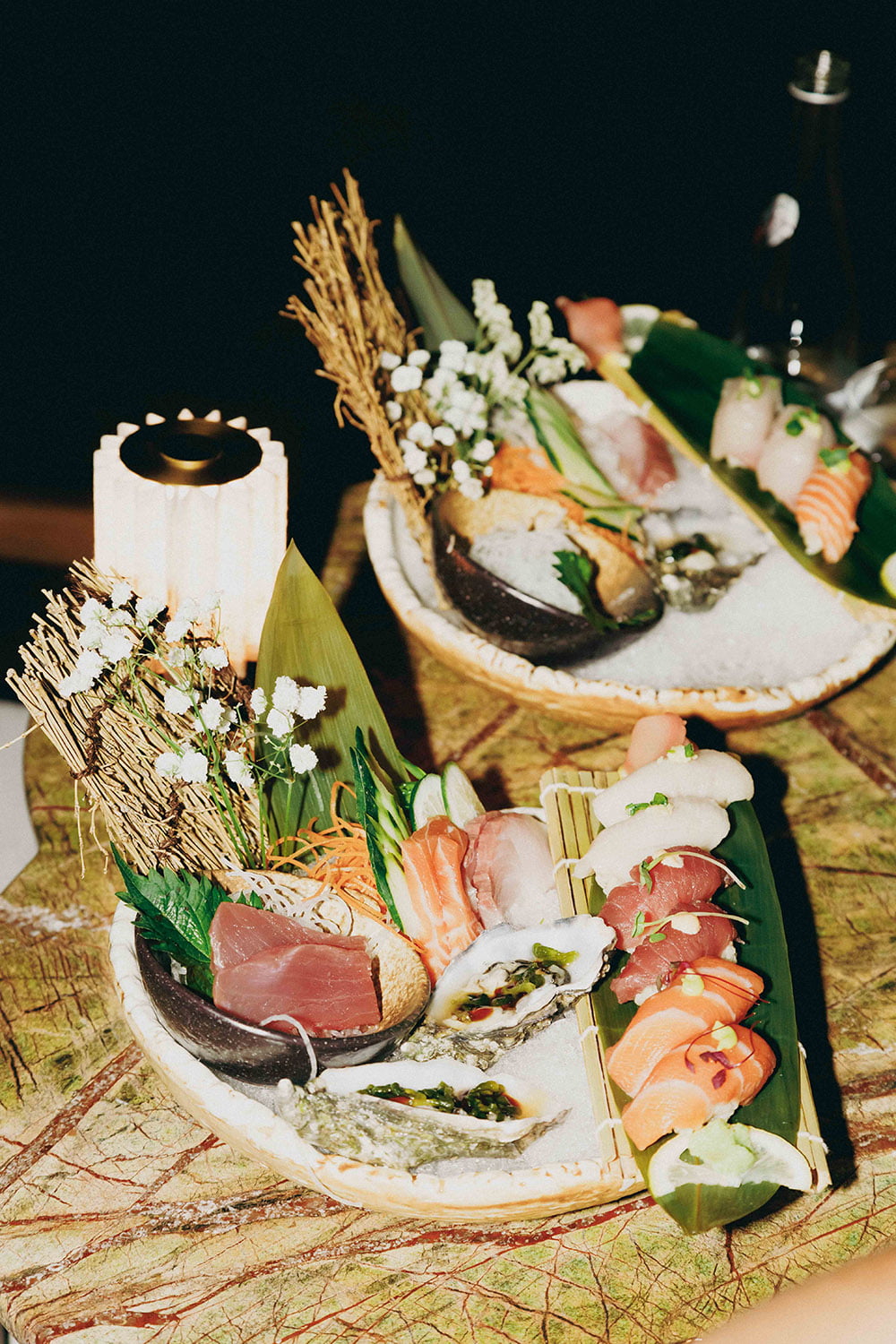When it comes to cooking up cross-cultural cuisine, authenticity and flexibility are everything. The ability to remain true to a nation’s culinary roots and flavor profiles while embracing the nuances of another makes for a tasty and thrilling take on multiethnic meals—and global gastronomes are well-aware of this food fact.
In Hong Kong, Paris, and now, Manila, Uma Nota restaurant flexes its flair for a convergence of cultures and cuisines with its robust rendition of Japanese-Brazilian gastronomy, in a scintillating Nipo-Brasileiro setting. In its own elevated and enthralling way, Uma Nota pays homage to the unique blend of Japanese and Brazilian influences that has developed over generations within São Paulo’s Liberdade District, the biggest Nikkei community outside of Japan.
Subculture on showcase
French national Alexis Offe founded Meraki Hospitality Group, Uma Nota’s corporate umbrella, with his sister, Laura; the supercharged siblings co-manage the company, along with its ventures in the food and beverage industry. Alexis and Laura, who grew up in Asia, opened the first Uma Nota in Hong Kong, in 2017, after spending several months traveling back and forth to Brazil to delve deeply into the dynamic Liberdade District’s distinct yet diverse identity. The Paris branch opened the year after, with local partners, while the brand’s most recent opening—at the Shangri-La Hotel in Bonifacio Global City, Metro Manila—took place at the start of 2024, in partnership with Filipino-British entrepreneur and investor, Michael Needham.
Offe is quick to point out that the concept is not fusion. “One thing that is very important and that sets us apart from other Nikkei concepts is that we are not a fusion brand. The biggest Japanese community is in São Paulo, and that started in the 1900s, with the emigration of Japanese farmers to Brazil’s coffee plantations. So really what we are showcasing is the Brazilian-Japanese subculture that has emerged through the years, but in a more elevated way. Uma Nota has always been a celebration of cultural harmony, a symphony where Brazilian and Japanese influences dance together,” he explains.
And what a scintillating symphony of style and sensory satisfaction it is turning out to be.
Stepping back in time
There is much to savor at Uma Nota Manila, and the experience begins with the restaurant’s carefully put-together ambiance. The atmospheric entry hallway of wooden beams that converge into a narrow yet gracefully arched ceiling is reminiscent of Japan’s traditional inns or ryokans. Dramatic lighting and electric lanterns complement the deep brown hues. The stately, moody hallway gives way to a much livelier scene, indoors. Uma Nota Manila calls to mind an old-school Brazilian jazz or Carnaval-style club, with its floor-to-ceiling drapery treatment, ambient lights and pops of color, graceful archways, gilded art-deco accents, and eye-catching eclectic pieces. The ambient feel is lived-in, by design; a vivid vintage vibe that hearkens to Brazil’s popular dance clubs of the 1970s. “The real guideline that we gave our designer, Asmaa Said of Dubai-based The Odd Duck design firm, is that the place needs to feel like it has been open for 15 years. It really has a very vintage-y Brazilian vibe,” Offe shares.
The space is divided into four main areas: The Living Room, with its striking “Hanging Tree” installation (an actual, dehydrated olive tree flown in from Dubai), seamlessly transitions from upscale dining to a sultrier and more seductive evening space. The Bar fosters a more intimate social setting, while Tropicália pays tribute to the 1970s Brazilian arts, fashion, and music movement of the same name. The Meiji Room, with its attention-grabbing Japanese mural, honors the history of the first wave of Japanese migration to São Paulo during the Meiji era.
Boteca-meets-izakaya menu
On cursory consideration, it may seem like Japanese and Brazilian cuisines have few things in common. But there are more similarities than one would expect, on closer scrutiny. Both put a premium on fresh and flavorful fare, combining ingredients with precision and flair. The Nipo-Brasileiro culture boasts a rich tapestry of flavors. Japanese culinary traditions, such as sushi and sashimi, have seamlessly integrated with Brazilian ingredients and cooking styles, creating a unique offshoot of both cultures.
Uma Nota’s menu, a collaborative effort between the owners, Executive Chef Gustavo Vargas, and Manila Head Chef Kyle Ureta, is a celebration of diverse flavors; a mouthwatering medley of the best in Japanese-Brazilian cuisine. With 30+ items on offer, foodies are spoilt for choice from the boteca-meets-izakaya roster. “There is no clear split between Japanese and Brazilian, as far as our menu goes. The focus is really on the subculture, with a number of iconic Brazilian and Japanese dishes, as well, and we try to keep those as traditional as possible. But there are also some recipes and items on the menu to which we have added a more contemporary, elevated twist,” explains Offe.
Uma Nota has always been a celebration of cultural harmony, a symphony where Brazilian and Japanese influences dance together.
Alexis Offe, Co-founder of Uma Nota
From the tempting Coxinhas de Frango, Uma Nota’s signature appetizer of chicken and okra croquettes with homemade chili sauce, to the succulent seared Black Cod served with butter-miso sauce, each meal comprises tasty, topnotch ingredients. Premium picks such as the Tataki de Carne de Sol, light-cured beef tenderloin and smoked ponzu with black garlic mayo and crispy shallots, and the Japanese A5 Wagyu Striploin from Kyushu Island in Japan further elevate the whole experience. Other must-try dishes include the Crab Udon, Hotate Tiradito, Unagi Roll, and the Robalo Assado, all of which highlight culinary creativity. For vegetarians, options include the Berinjela, a delectable concoction of whole eggplant, miso glaze, cashew nuts, and goat cheese, and the Dadinhos de Tapioca, a starter of Brazilian tapioca and diced cheese, among several other dishes. Desserts include the decadent Amor Por Chocolate and Uma Nota’s famous Ube Cheesecake.
Nipo-Brasileiro nuances, in a glass
Uma Nota offers carefully curated cocktails and spirits to complement its superb cuisine, assuring a perfect combination for every palette. Experience the vivid world of Brazilian mixology with the legendary Caipirinha, which combines Cachaça Yaguara, sugar, lime, and fresh fruit. The Kyoto Sour, made with Atago No Matsu sake, grapefruit, green Tabasco, lemon, and agave, is as perky as it is pleasant in flavor profile. The Maluco Carioca is a satisfying Brazilian limeade made with Cachaça Yaguara, while the Liberdade is a refreshing blend of Diaguitas Reservado Transparente Pisco, green pepper, almond, pistachio, lime, and cucumber. Among the more inventive signature drinks are the Uma Nota Cup Noodle, which comprises Plantation 3 Stars rum, handcrafted toasted coconut liqueur, pineapple, cucumber, lime, and sesame oil, and the Red Flag, a punch-packing combo of Arrete tequila, Mancino Rosso Amaranto, Mezcal Durango, raspberry chili syrup, with togarashi on the glass rim.
A captivating confluence of culture
Offe says: “Our journey into Manila is more than just an expansion; it’s an immersion into the rich tapestry of flavors and experiences unique to this vibrant city.” He adds that Uma Nota Manila will be elevating the experience beyond its Hong Kong and Paris establishments. Big events will become a regular part of the program, at Uma Nota Manila, promising an even more spirited, scintillating atmosphere.
Overall, Uma Nota Manila is more than just an upscale, trendy venue for compelling cocktails and cuisine—it’s a desirable destination for those seeking an immersive experience into energetic entertainment, distinctive design, and captivating cultural confluence.












